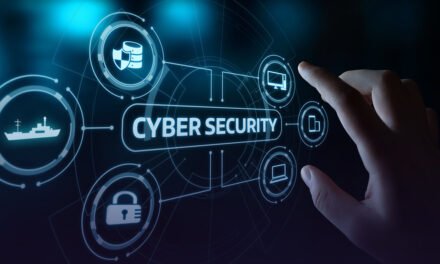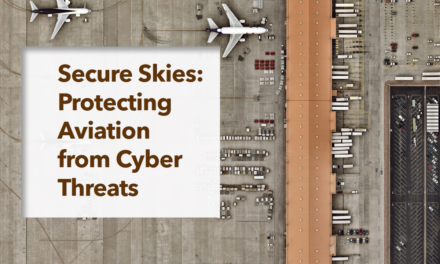What is the role of communication and encryption technologies in defense equipment?
Communication and encryption technologies play a vital role in defense equipment by ensuring secure, reliable, and real-time data exchange between military units, command centers, and allied forces. These technologies safeguard sensitive information, enable coordinated operations, and protect against adversarial interception and cyber threats. Here’s a detailed breakdown of their roles:
1. Communication Technologies in Defense Equipment
a. Real-Time Data Exchange
- Role:
- Facilitate instantaneous sharing of situational data, such as troop movements, battlefield conditions, and intelligence reports.
- Examples:
- Tactical radios for ground troops.
- Satellite communication (SATCOM) for global reach.
- Data links like Link 16 for real-time battlefield coordination.
b. Multi-Domain Connectivity
- Role:
- Integrate land, air, sea, space, and cyber assets into a unified communication network.
- Examples:
- Aircraft carriers communicating with fighter jets, submarines, and satellites during joint operations.
c. Command and Control (C2)
- Role:
- Ensure hierarchical communication between strategic, operational, and tactical levels of command.
- Examples:
- Advanced C2 systems like the US Army’s WIN-T (Warfighter Information Network-Tactical).
d. Interoperability
- Role:
- Enable seamless communication between allied forces during joint missions or coalitions.
- Examples:
- NATO-standardized communication systems using protocols like STANAG (Standardization Agreement).
e. Resilience Against Disruption
- Role:
- Maintain reliable communication under adverse conditions, including electronic warfare (EW) and jamming.
- Examples:
- Frequency-hopping radios and mesh networks.
2. Encryption Technologies in Defense Equipment
a. Securing Communication Channels
- Role:
- Protect sensitive information from interception by adversaries.
- Examples:
- Advanced encryption algorithms like AES-256 for securing voice, video, and data communication.
b. Authentication and Access Control
- Role:
- Verify the identity of users and devices in the communication network to prevent unauthorized access.
- Examples:
- Public Key Infrastructure (PKI) for cryptographic authentication.
c. Data Integrity
- Role:
- Ensure that transmitted data is not tampered with during transit.
- Examples:
- Digital signatures and message authentication codes (MAC).
d. End-to-End Encryption
- Role:
- Secure communication from the sender to the recipient without intermediaries accessing the data.
- Examples:
- Encryption in tactical radios and secure SATCOM terminals.
e. Resistance to Quantum Threats
- Role:
- Develop post-quantum cryptography to protect against potential decryption by quantum computers.
- Examples:
- Research in lattice-based and hash-based cryptographic algorithms.
3. Key Applications of Communication and Encryption in Defense
a. Tactical Communication
- Examples:
- Handheld and vehicle-mounted radios with secure voice and data encryption.
- Mesh networks enabling troops to stay connected in dynamic environments.
b. Strategic Communication
- Examples:
- SATCOM systems for intercontinental communication between military headquarters and deployed forces.
- Secure video conferencing for real-time decision-making.
c. Intelligence, Surveillance, and Reconnaissance (ISR)
- Examples:
- Encrypted data links for transmitting real-time drone footage and satellite imagery to ground stations.
- Secure channels for sharing intelligence among allied forces.
d. Cybersecurity and Electronic Warfare
- Examples:
- Encrypted communication systems resilient to jamming and cyberattacks.
- Protection against electronic eavesdropping and spoofing.
e. Missile Defense Systems
- Examples:
- Secure command links between radar systems, command centers, and interceptors in systems like THAAD and Aegis BMD.
4. Advanced Technologies in Communication and Encryption
a. Artificial Intelligence (AI)
- Enhances threat detection, anomaly identification, and encryption key management.
- Example: AI algorithms identifying potential cyberattacks on communication networks.
b. Software-Defined Radios (SDR)
- Allow dynamic reconfiguration of communication parameters for adaptability in multi-domain operations.
- Example: JTRS (Joint Tactical Radio System) supporting voice, data, and video transmission.
c. Quantum Communication
- Utilizes quantum key distribution (QKD) for theoretically unbreakable encryption.
- Example: Experimental use of QKD in secure satellite communication.
d. Blockchain Technology
- Ensures the integrity and traceability of communication and command data.
- Example: Secure messaging platforms for mission-critical information.
e. 5G and Beyond
- High-bandwidth, low-latency communication for connecting sensors, vehicles, and command centers in real time.
- Example: Autonomous systems relying on 5G for seamless data exchange.
5. Challenges in Communication and Encryption
a. Adversarial Threats
- Jamming, interception, and spoofing by enemy forces.
- Solution: Frequency hopping, spread spectrum, and AI-enhanced signal processing.
b. Cybersecurity Risks
- Vulnerability to hacking and cyberattacks.
- Solution: Continuous updates to encryption protocols and multi-layered defense.
c. Bandwidth and Latency
- High demand for bandwidth in modern operations.
- Solution: Efficient data compression and prioritization algorithms.
d. Interoperability Issues
- Integrating systems from different nations and services.
- Solution: Standardization efforts like NATO’s STANAG protocols.
6. Strategic Importance
a. Operational Superiority
- Ensures that forces have the communication infrastructure to outmaneuver adversaries.
b. Information Security
- Protects classified data, preventing adversaries from gaining strategic advantages.
c. Decision-Making
- Enables rapid and informed decision-making with real-time, secure data transmission.
d. Resilience in Conflict
- Maintains communication integrity even under adversarial EW and cyber operations.
Conclusion
Communication and encryption technologies are indispensable to modern defense operations. By ensuring secure, resilient, and interoperable communication, they empower military forces to coordinate effectively, protect sensitive information, and maintain an operational edge in complex and contested environments. As threats evolve, the continuous development of advanced encryption algorithms and communication systems will remain essential for defense capabilities.
Hashtags
#DefenseCommunication #SecureDefenseComms #MilitaryEncryption #EncryptedCommunication #DefenseCommsTech #SecureCommunication #EncryptedMilitaryNetworks #CyberSecureDefense #CommsForDefense #SecureMissionComms #EncryptionTechnologies #AdvancedEncryption #MilitaryDataSecurity #EncryptionTech #DataProtectionDefense #SecureDefenseNetworks













